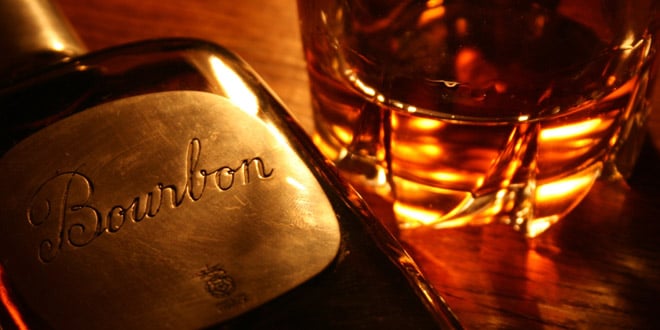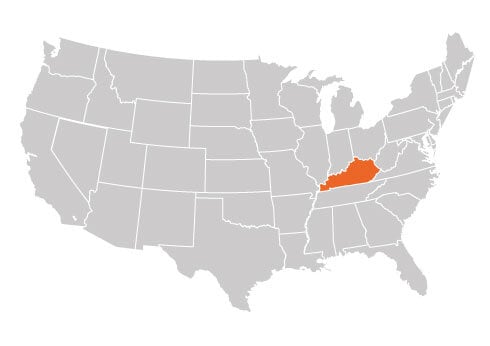
BourbonAmerican Whiskey
America’s first whisky distillers didn’t live in Kentucky and didn’t use corn, but you wouldn’t know it today. Even as craft distilleries spring up all over the States, Kentucky Straight Bourbon remains American whiskey’s classic incarnation, shaped by corn, white oak and an inimitable honeyed sweetness.
Early times
In the years leading up to independence, farming was tough in America. But some farmers in Pennsylvania and Maryland hit upon an idea: turn their excess grain crop into whiskey, which was easier to keep, trade and transport – and made more money.
Tax hikes sent the distillers south into Kentucky (and Tennessee), and grants to farm corn changed their raw materials, but the principle remained the same – and whiskey distillation became a thriving business.
The age of refinement
These early bourbons were rough and ready – distilled, decanted into cask, shipped, sold and consumed with a minimum of fuss. But a few individuals began to refine the process. Colourful minister Rev Elijah Craig started using charred barrels; Dr James Crow (an émigré Scot) brought scientific rigour and sour-mashing.
From these 19th-century beginnings have evolved the rules of bourbon production. You must use 51-80% corn (supplemented by wheat, rye and/or barley); distil no higher than 80% abv; put into new charred white-oak casks no higher than 62.5% abv; add nothing else except water.
It sounds strict, but there’s considerable leeway: what other grains will you use and in what quantities? How big’s your cask and what kind of oak is it? What strength will you distil to, and at what strength will you put into barrel? Where will you put your casks in the warehouse? As for the type of yeast used…lots of scope for experimentation.

Woodford Reserve is the only bourbon producer to triple-distil its spirit
What’s your flavour?
One of the keys to style, but by no means the only one, is the mashbill – the recipe of grains used in making your bourbon. Use a lot of rye and its drier, spicier, peppery flavours will provide a counterpoint to the corn’s sweetness, resulting in bourbons such as Bulleit, Knob Creek, Basil Hayden, Woodford Reserve, Wild Turkey and Four Roses Single Barrel.
But dial up the wheat and you add elegance, smoothness and sometimes a nutty, subtly spicy character – think Maker’s Mark, Van Winkle, Old Fitzgerald and WL Weller. It’s just a question of the finding the bourbon that works for you.
Did you know?
- American whiskey production began among the poor farmers of Maryland and Pennsylvania – they only moved south into Kentucky when taxes went up
- contrary to popular belief, you don’t have to be in Kentucky to make bourbon. Distilleries from Texas to New York are now producing their own bourbons
- early whiskey was shipped downriver in barrels stencilled with the name ‘Old Bourbon’ to designate the former name of the area they were from. As people grew to like corn whiskey, the name stuck
Typical Character and Style of Bourbon
-
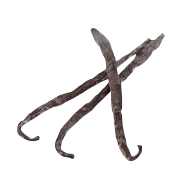 Vanilla
Vanilla
-
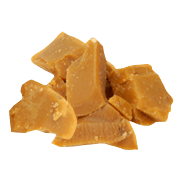 Toffee
Toffee
-
 Cinnamon
Cinnamon
-
 Oak
Oak
-
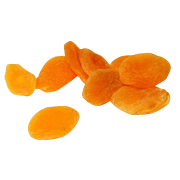 Dried Fruit
Dried Fruit
Distilleries in Bourbon
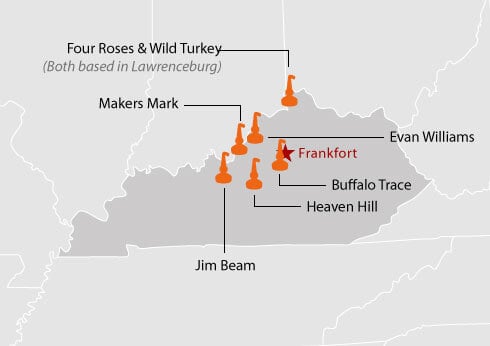
Filter
Price Range
Bottling Status
Region
Brand
Country
Type
Flavour
Age
Vintage
Cask Type
Bottler
Strength
Size
Single Cask
Limited Edition
Flavour Profile
Colouring
Certification

Blanton's Original
$118.65
($169.50 per litre)

Blanton's Original and Straight From the Barrel Set2x70cl
$328.98
($234.98 per litre)

Buffalo Trace Kosher Wheat-Recipe Bourbon
$43.09
($57.45 per litre)

Four Roses Small Batch Bourbon
$34.46
($49.23 per litre)

Woodford Reserve Double Oaked
$63.58
($90.83 per litre)

Buffalo Trace Kosher Rye-Recipe Bourbon
$43.09
($57.45 per litre)

Knob Creek 9 Year Old
$38.78
($55.39 per litre)

E. H. Taylor Small Batch
$113.25
($151.01 per litre)

Angel's Envy BourbonPort Finish
$63.58
($90.83 per litre)

Woodford Reserve Distiller's Select
$39.85
($56.94 per litre)

Wild Turkey 101
$36.40
($52 per litre)

Woodford Reserve Batch Proof (61.6%)
$134.83
($192.61 per litre)

Willett's Pot Still Reserve Single Barrel Bourbon
$78.47
($112.10 per litre)

Bulleit Bourbon Whiskey
$32.30
($46.15 per litre)

Eagle Rare 10 Year Old
$43.95
($62.79 per litre)

Maker's Mark
$29.07
($41.53 per litre)

Michter's US*1 Small Batch BourbonGift Box
$63.58
($90.83 per litre)

Wild Turkey Rare BreedBarrel Proof
$59.59
($85.13 per litre)

Buffalo Trace Bourbon
$29.07
($41.53 per litre)

James Cree's Cattle Ranch 3 Year Old Bourbon
$21.30
($30.43 per litre)

Maker's Mark 46 Bourbon
$42.34
($60.48 per litre)

FEW Bourbon
$58.19
($83.13 per litre)

American Barrels Bourbon
$59.27
($79.03 per litre)

Four Roses Single Barrel Bourbon
$48.48
($69.26 per litre)


